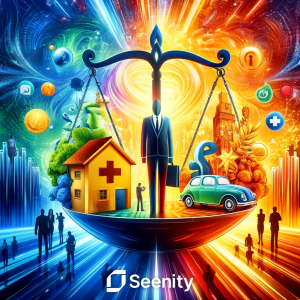What do we do with the Prediction outcome? Many ponder the relationship between legal engines and AI. In the domains of insurance and finance, this connection is profound. Why so?
Let’s start with the models that assess risk. At the end of the process, the result will come out as a specific number. Implementing a risk assessment model doesn’t yield images or text, but rather a definitive number born from a thoroughly examined process. Every result from this model holds significance. There’s always someone in a profit-driven company tasked with understanding the value behind these figures. As we’ve termed in prior articles, this is “Intelligence data” – the entity deciding on the information that flows in and out of the model.
Let’s take a simple example where the model produces a risk rating, say 90. What does this mean? During the model’s construction process, in the Seenity platform, for instance, it’s possible to run a simulation that shows the riskiness of certain policies – that is, the probability of a claim for property damage or a loan default, and the financial implications of this rating. Looking at that number, one can understand the likelihood of the risk that this figure represents and how accurate it is in terms of prediction correctness. Ultimately, we live in a world where the probability of risk materialization can be summarized by a number. Therefore, this number represents the probability that translates to: the chances of profit and loss.
In our previous post, we discussed the ‘Intelligence diction’. This role knows how to articulate the meaning of that number: probability percentages, how many policies or loans he “throws out,” and how much savings, profitability, or loss he will have. All of this, as mentioned, is during the simulation in the model-building testing process, as we showcased in earlier posts.
After going through this process, one must implement the model in the underwriting process and make automatic decisions upon receiving a certain number (which, as mentioned before, represents risk data for profit or loss). We live in a digital era, and one cannot expect a human to monitor every process and decide what to do with this number: raise the price? Lower the price? Redirect for verification or conclude the process and automatically sign/approve the policy or the loan. And this is precisely where the legal engine of Seenity’s platform comes into play.
The Seenity platform is one that has been thoughtfully designed and learned from the entire process required by insurance companies and financial institutions. It’s not just a system that aids in constructing a quality model that delivers good results with winning information, but it also addresses the company’s digital stage. In simple terms, it’s about what is done with the prediction and how the entire process becomes fully digital.


